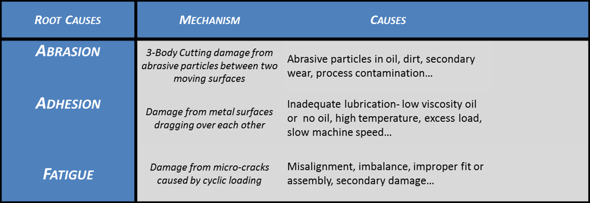While it is true that all machines eventually wear out, proper maintenance and care can improve machinery health and longevity. This is particularly true with regard to the two most common types of machine degradation: corrosion and wear.

Corrosion
As machine operators know, water and many metals do not mix. When moisture is present on a metal surface, an oxidative chemical reaction can take place. Like all chemical reactions, temperature increases expedite the process, causing premature wear. Water content of lubricating oils has typically been measured by performing a Karl Fischer titration. While this is common practice it is also cumbersome, time-consuming and requires the use of corrosive chemicals. It is not a procedure that can be performed on-site at the location of the machine in question. Karl Fischer titration is typically conducted in a laboratory, under a fume hood by a trained chemist or technician.
Recent advances have made it possible to measure the level of water contamination in oil using a handheld IR spectrometer – the FluidScan Q1100. The FluidScan, with complete water solution, enables virtually any maintenance technician to quickly and easily measure the water content of lubrication oil in minutes using only a couple drops of oil.
Wear
Abrasion, fatigue, and adhesion are the most common wear mechanisms. While some amount of wear is to be expected, extreme degradation that causes a machine to be removed from service is not normal. The good news is that most types of wear can be controlled, even prevented, with proper maintenance and care.
Abrasive wear can be controlled by always using lubricants with the proper viscosity and additive packages recommended by the manufacturer. Preventing foreign particles, such as dirt and debris, from the entering the machine can also minimize the risk of mechanical surface degradation. It’s not always possible to keep dirt and dust out of the oil, particularly if the machinery is in a dirty environment. However, measuring and trending wear particles can indicate when intervention is needed to prevent increased wear or even equipment failure.
The two other forms of wear, fatigue and adhesion, can often be avoided by operating machines within rated loads and speeds. Particles caused by fatigue wear have a typical shape that can be detected by using laser imaging techniques such as LaserNet Fines. Adhesion damage occurs when the boundary layer of oil between metal surfaces is missing or insufficient. This is usually caused by one of four reasons: no lubricant, low viscosity, excessive loading or slow operating speed.
To learn more about any of these wear mechanisms, please read this case study.

